Study of Antigravity in an F(R) Model and in Brans-Dicke Theory with Cosmological Constant
Abstract
We study antigravity, that is, having an effective gravitational constant with a negative sign, in scalar-tensor theories originating from F(R) theory and in a Brans-Dicke model with cosmological constant. For the F(R) theory case, we obtain the antigravity scalar-tensor theory in the Jordan frame by using a variant of the Lagrange multipliers method and we numerically study the time dependent effective gravitational constant. As we will demonstrate by using a specific F(R) model, although there is no antigravity in the initial model, it might occur or not in the scalar-tensor counterpart, mainly depending on the parameter that characterizes antigravity. Similar results hold true in the Brans-Dicke model.
1. Introduction
During the last two decades our perception about the universe has changed drastically owing to the discovered late time acceleration that our universe has. Particularly, it can be thought as one of the most striking astrophysical observations with another striking observation being the verification of the inflating period of our universe. Actually, moving from time zero to present time, inflation came first, with the late time acceleration occurring at present epoch. One of the greater challenges in cosmology is to model this late time acceleration in a self-consistent way. According to the new Planck telescope observational data for the present epoch, the universe is consistently described by the ΛCDM model, according to which the universe is nearly spatially flat and consists of ordinary matter (~4.9%), cold dark matter (~26.8%), and dark energy (~68.3%). The dark energy is actually responsible for late time acceleration and current research on the field is mostly focused on this issue.
One of the most promising and theoretically appealing descriptions of dark energy and late time acceleration issues is provided by the F(R) modified theories of gravity and related modifications. For important review articles and papers on the vast issue of F(R) theories, the reader is referred to [1–19] and references therein. For some alternative theories to modified gravity that model dark energy, see [5, 20–24]. The most appealing characteristic of modified gravity theories is that what is actually changed is not the left hand side of the Einstein equations, but the right hand side. Late time acceleration then requires a negative w fluid, which can be consistently incorporated in the energy momentum tensor of these theories. This feature naturally appears in F(R) theories and also late time acceleration solutions of the Friedmann-Robertson-Walker equations naturally occur in these theoretical frameworks [1–19, 25]. In addition, inflation, the first accelerating period of our universe, is also consistently described by some F(R) theories, rendering the latter a very elegant and economic description of nature at large scales, where general relativity fails to describe phenomena consistently. Particularly, the possibility to theoretically describe, in a consistent and elegant way, early-time inflation and late-time acceleration in F(R) gravity was explicitly demonstrated in the Nojiri-Odintsov model [25]. For studies on specific solutions in several strong curved backgrounds, see [26–31]. Remarkable possibilities, like modified gravitational theories with nonminimal curvature-matter coupling, were given in [32–35] and references therein.
In principle, every consistent generalization of general relativity inevitably has to be confronted with the successes of general relativity. Since general relativity is a successful description of nature in strong gravitational environments, there exist a large number of constraints that need to be satisfied, in order that an F(R) modified gravity theory can be considered as viable. The constraints to be satisfied are mainly imposed from local tests of general relativity, for example, from planetary and star formation tests and moreover from various cosmological bounds. In addition, since each F(R) theory has a Jordan frame scalar-tensor gravitational theory counterpart, with ω zero and a potential, the scalarons of this counterpart theory must be classical, in order to ensure quantum-mechanical stability (see [1–6]).
In theories of modified gravity a longstanding debatable theoretical problem exists, related to Jordan and Einstein frames [36, 37], since the physics coming out from the two frames can be quite different in principle. In view of this, we will focus on the physics of Jordan frame and demonstrate that it is possible to have antigravity [38–41]. For the possibility of antigravity regimes in scalar-tensor theories consult [38–40] and for antigravity in F(R) theories see [41]. In this paper we will study antigravity regimes coming from F(R) theories and from Brans-Dicke theories in the Jordan frame. In reference to the F(R) theories, we will find the Jordan frame antigravity scalar-tensor counterpart, using a modified method of the Lagrange multipliers, as we will see in the following sections. The interesting feature about these theories is that, although the F(R) theory has no antigravity, the resulting Jordan frame scalar-tensor theory may or may not have antigravity. We exemplify this by numerically working out an example. In the case of Brans-Dicke antigravity, we introduce by hand an antigravity term and numerically solve the cosmological equations and as we will demonstrate, similar results hold true; that is, antigravity may exist or not, depending on the parameters of the theory.
This paper is organized as follows: in Section 2 we briefly recall the essentials of F(R) theories; in Section 3 we get to the core of the paper and introduce a modification of the Lagrange multipliers method in order to get antigravity from F(R) theories. Accordingly, we apply the technique to one quite known F(R) model and present the result of our analysis. The study of antigravity is performed in Section 4 and the conclusions follow in the end of the paper.
2. General Features of F(R) Dark Energy Models in the Jordan Frame
In this section in order to maintain the paper self-contained, we briefly review the main features of F(R) gravity theories in the Jordan frame in the theoretical framework of the metric formalism. For an important stream of review papers and articles see [1–19] and references therein.
3. Antigravity in F(R) Models
The possibility of antigravity sectors in F(R) theories was firstly pointed out in [41] and also in various scalar-tensor models in [38–40]. In most cases, a passing from antigravity to a gravity regime always occurs, with a singularity existing at the transition between these two different gravitational regimes. At the transition, the effective gravitational constant and also several invariants of the geometry, such as the Weyl invariant, become singular quantities [38–41]. In the present paper, we are interested in studying the time dependence of the effective gravitational constant and see how this behaves for both an F(R) theory related antigravity scalar-tensor model and an antigravity version of the Brans-Dicke model with cosmological constant. In reference to F(R) theories, we will explicitly demonstrate in the next subsection how to find the antigravity scalar-tensor theory in the Jordan frame. By doing so, we will have at hand an antigravity scalar-tensor theory with a potential term and we will explicitly find how the scalar field, along with the gravitational constant and the energy density, behaves for various values of the model dependent and cosmological variables. Then we study the Brans-Dicke model in which we will make a by hand modification in order to render it an antigravity model. As we will see, in both cases, there exist several gravity-antigravity regimes, depending on the values of the model dependent and cosmological variables. Moreover, for the F(R) model, although the model per se has no antigravity, the corresponding scalar-tensor model gives rise to antigravity regimes. However, there exist values of the variables for which the model describes gravity regimes. In the following subsections we will study in detail these models.
3.1. A General Way to Obtain Antigravity Scalar-Tensor Models from F(R) Models
It is a quite well-known fact that scalar-tensor theories are equivalent to F(R) theories. In the literature one starts from an F(R) theory and ends up to a nonminimally coupled scalar-tensor theory and more specifically to a Brans-Dicke theory with ωBD equal to zero. This is practically the Lagrange multipliers method (see [1–6] and particularly Nojiri and Odintsov [1] and De Felice and Tsujikawa [2]).
3.2. The Model F(R) = R − R−p with p a Positive Integer
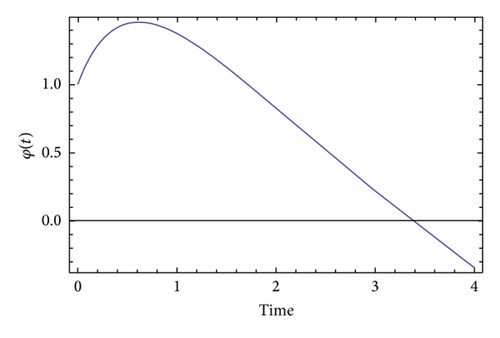
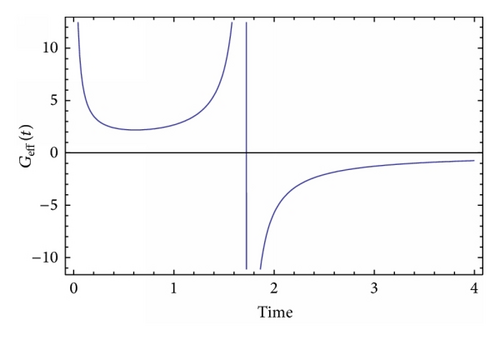
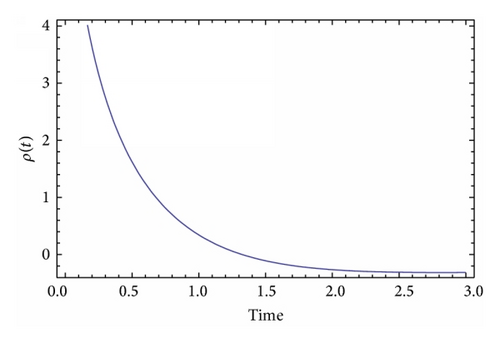
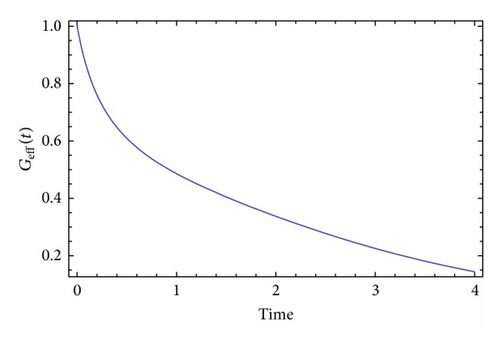
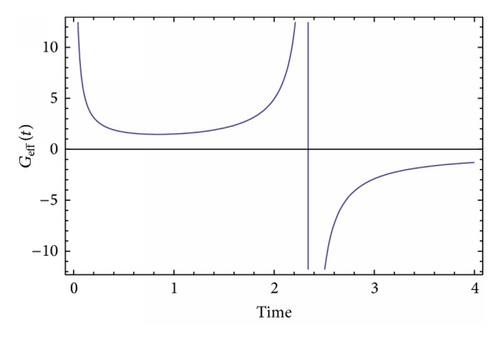
Before we close this section, we discuss an important issue. Reasonably, it can be argued that since the effective gravitational constant Geff(t) diverges at some time, this could imply some sort of instability of the F(R) theory. Indeed, this is true to some extent. Actually, the singularity of the gravitational constant is a spacetime one, since spacetime geometric invariants like the Kretschmann scalar RabcdRabcd seriously diverge. In a mathematical context, this singularity is also a naked Cauchy horizon, not “dressed” by some event horizon, which, in turn, would imply the loss of predictability and also signal a spacetime singularity. Therefore, it is better if these singularities occur in the very early universe. As for the issue of stability of the initial F(R) theory, this is an involved question, since the quantum mechanical stability of the F(R) theory is examined in the Einstein frame and not in the Jordan frame [1]. In the case of an occurring singularity, the Einstein frame is not consistently defined, since this singularity also introduces another singularity in the scalar field redefinition necessary for the definition of the canonical transformation in the Einstein frame (see the book of Faraoni for more details on this [36]). A very thorough analysis of the stability of a, similar to ours, scalar-tensor model was studied in [43] (see equation (1) of [43]), in which case the model can exhibit antigravity if the nonminimal coupling term becomes negative. The model in [43] can be identical to our Brans-Dicke model if the potential is zero and the nonminimal coupling contains terms of the order of ~φ.
4. Antigravity in Brans-Dicke Models
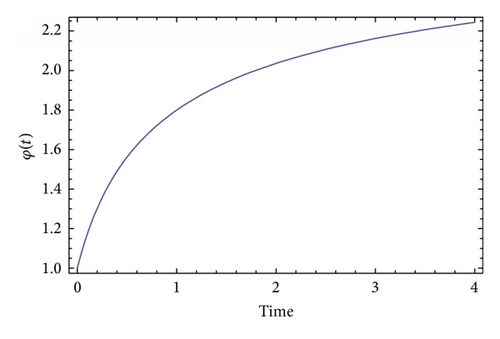
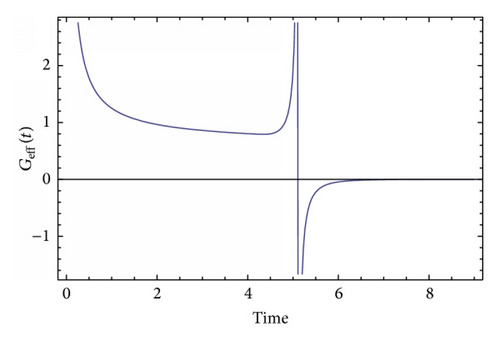
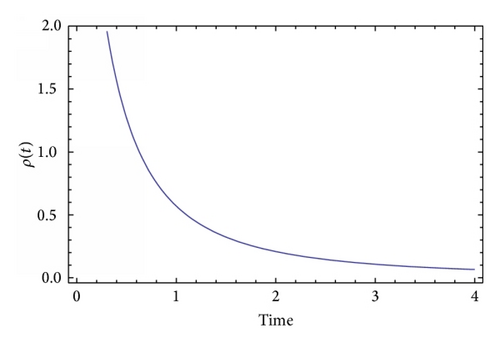
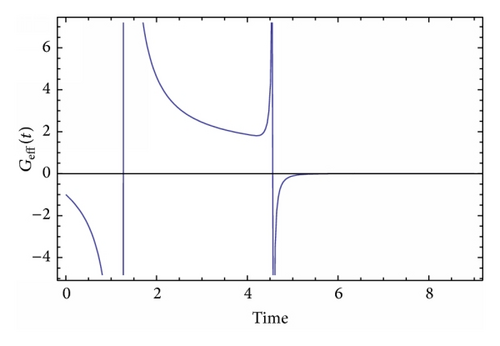

5. A Brief Discussion
6. Conclusions
In this paper we studied antigravity in scalar-tensor theories originating from F(R) theories and also antigravity in the Brans-Dicke model with cosmological constant. In the case of the F(R) theories we used a variant of the Lagrange multipliers method leading to antigravity scalar-tensor model in the Jordan frame, with ω = 0 and a scalar potential. We applied the technique and studied numerically the time-dependence of the gravitational constant. As we exemplified, although the initial F(R) model has no antigravity, guaranteed by the condition F′(R) > 0, the scalar-tensor Jordan frame counterpart may or may not have antigravity. This latter feature strongly depends on the parameters of the theory and particularly on the antigravity parameter . In the case of the Brans-Dicke model with cosmological constant, we studied a by-hand introduced antigravity modification of the model in the Jordan frame. The numerical analysis of the cosmological equations showed that the model exhibits antigravity depending on the numerical values of the parameters and particularly on the antigravity parameter, like in the F(R) model case. In both cases, there exist regimes in the cosmic evolution in which either gravity or antigravity prevails and when going from antigravity to gravity and vice versa a singularity occurs, like in most antigravity contexts [38–41]. It is worth searching theoretical constructions in which such a singularity is avoided. This would probably require some sort of singular conformal transformations between frames, or some singularity of the Lagrangian, a task we hope to address in the near future.
Finally, it is worth discussing the results and also the cosmological implications of our results. The main goal of this paper was to demonstrate all possible cases in which antigravity might appear in modified theories of gravity. As we explicitly demonstrated, in the case of F(R) theories, although the initial Jordan frame F(R) theory had no antigravity (recall the condition F′(R) > 0 which actually guarantees this), antigravity might show up when the Jordan frame equivalent theory is considered, modified in the way we explicitly showed in the text. This is one of the new and notable results of this paper. In the case of Brans-Dicke model, introducing by hand a term that causes antigravity, then antigravity might or might not appear in the resulting theory. The latter depends strongly on the value of the antigravity parameter . In principle, antigravity is a generally unwanted feature in modified theories of gravity and thus it can be considered less harmful if it occurs in the very early universe, prior to inflation. Indeed, this is exactly what happens in all the cases we explicitly demonstrated in the text. However, antigravity is rather difficult to detect experimentally, unless there exists some mechanism of creation of a primordial black hole during the antigravity regime that could retain some information in terms of some sort of gravitational memory [44]. The evaporation of this black hole could reveal the value of the gravitational constant at the time it was created. A well posed question may be to ask how such a compact gravitational object could be created in an antigravity regime. The answer to this could be that antimatter behaves somehow different in antigravity regimes, so it could probably play a prominent role in such a scenario. However, we have to admit that this is just a speculation, since after antigravity occurs, the universe experiences a gravitational regime with a spacetime singularity at the moment of transition. We cannot imagine how a compact gravitational object (if any) could react under such severe conditions.
Conflict of Interests
The authors declare that there is no conflict of interests regarding the publication of this paper.




